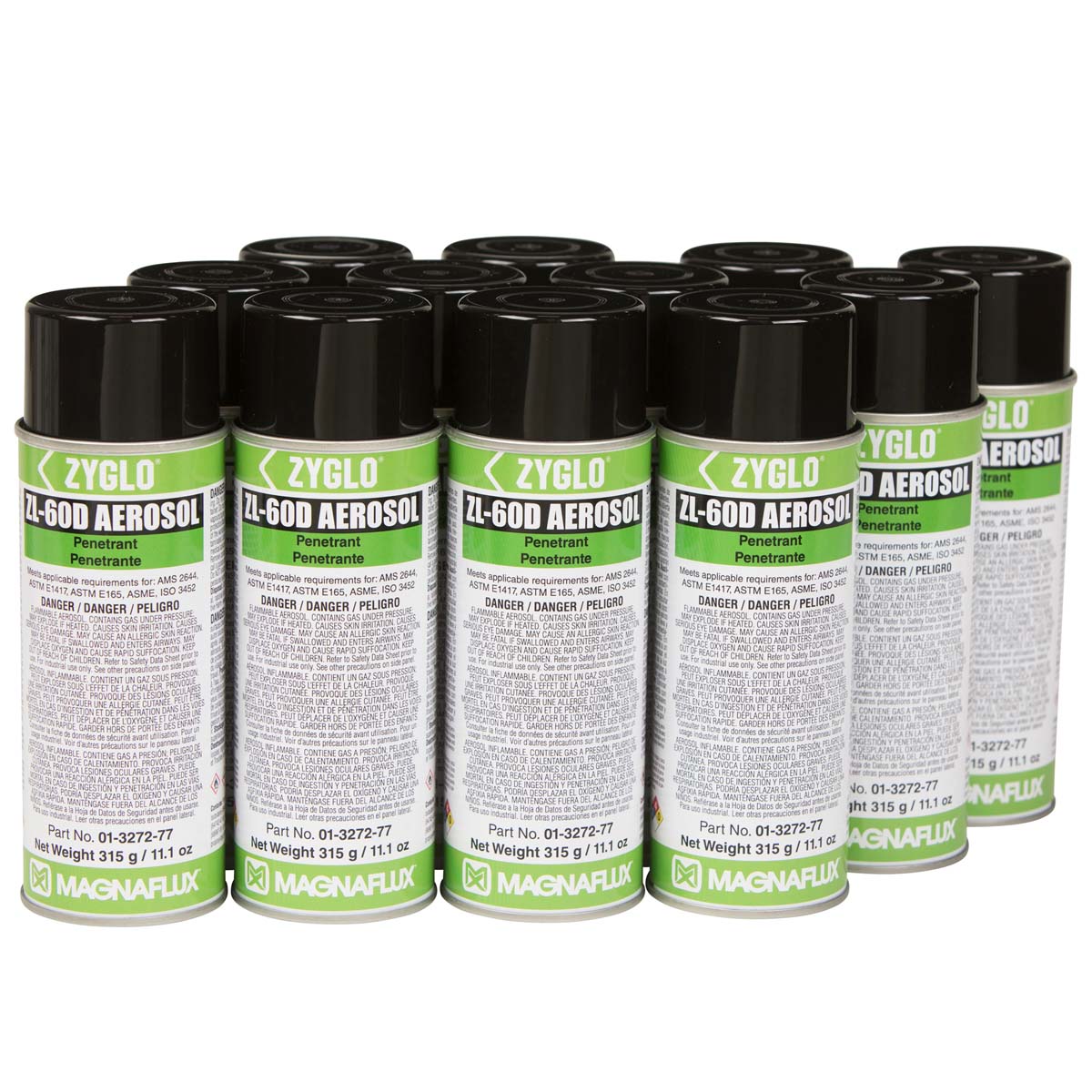
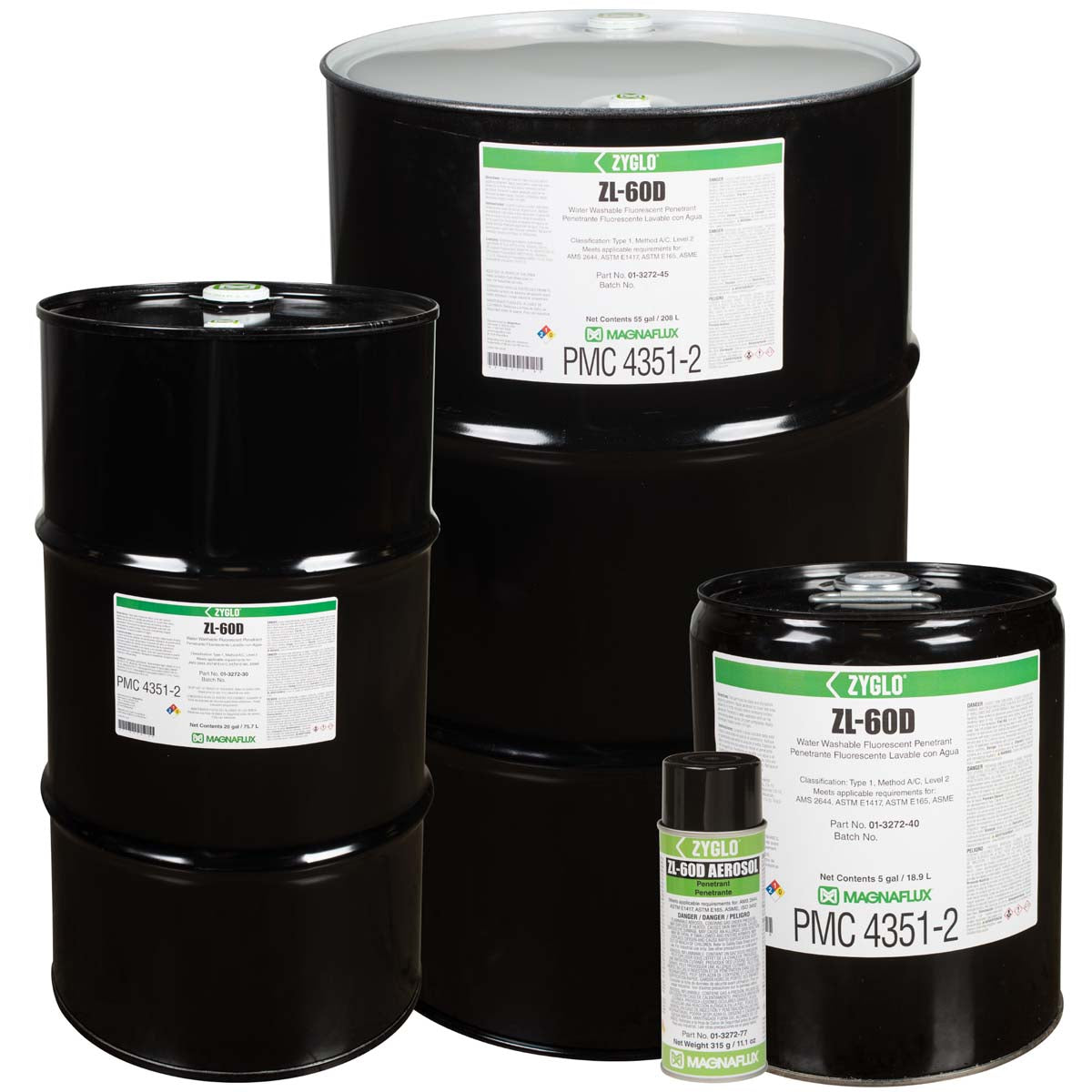
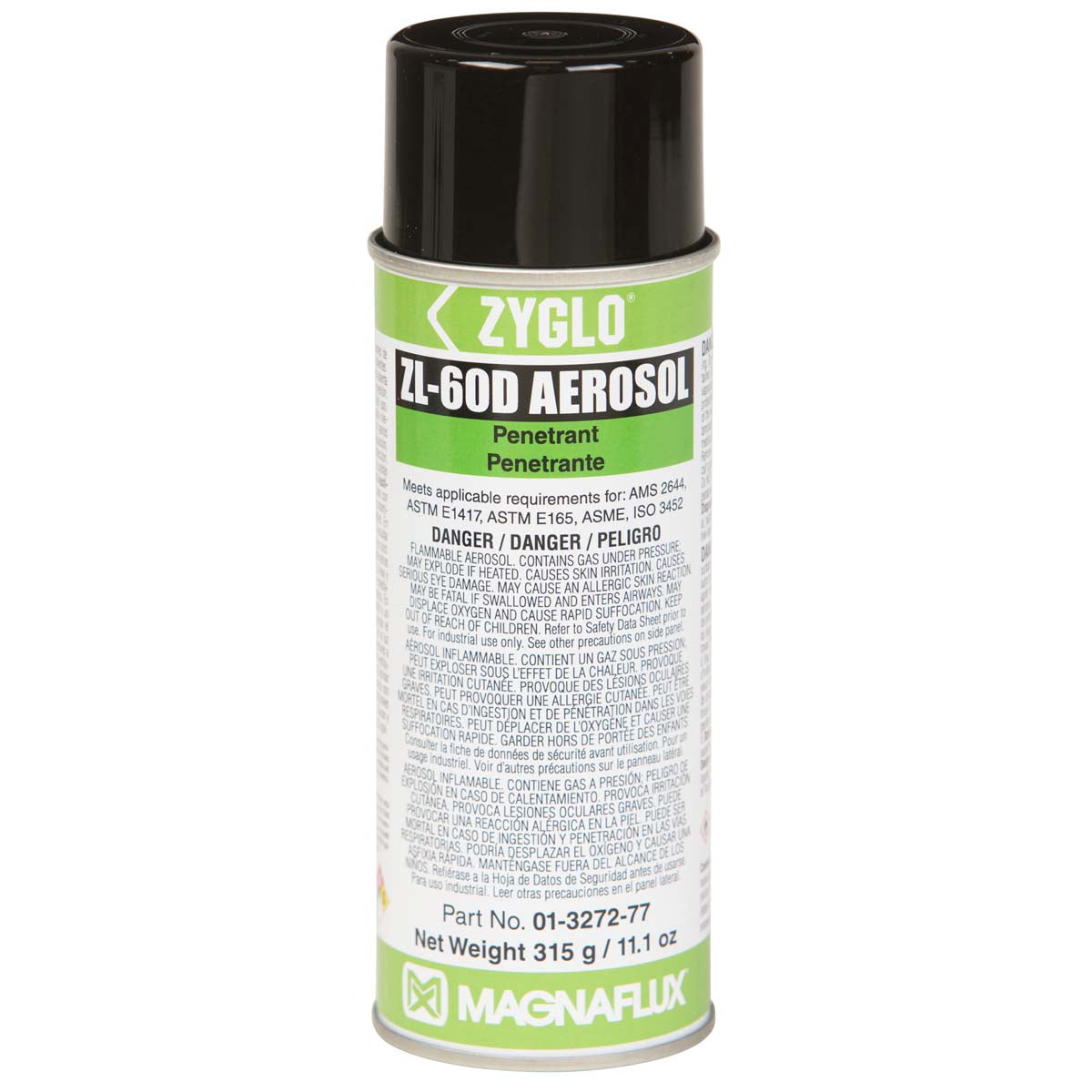
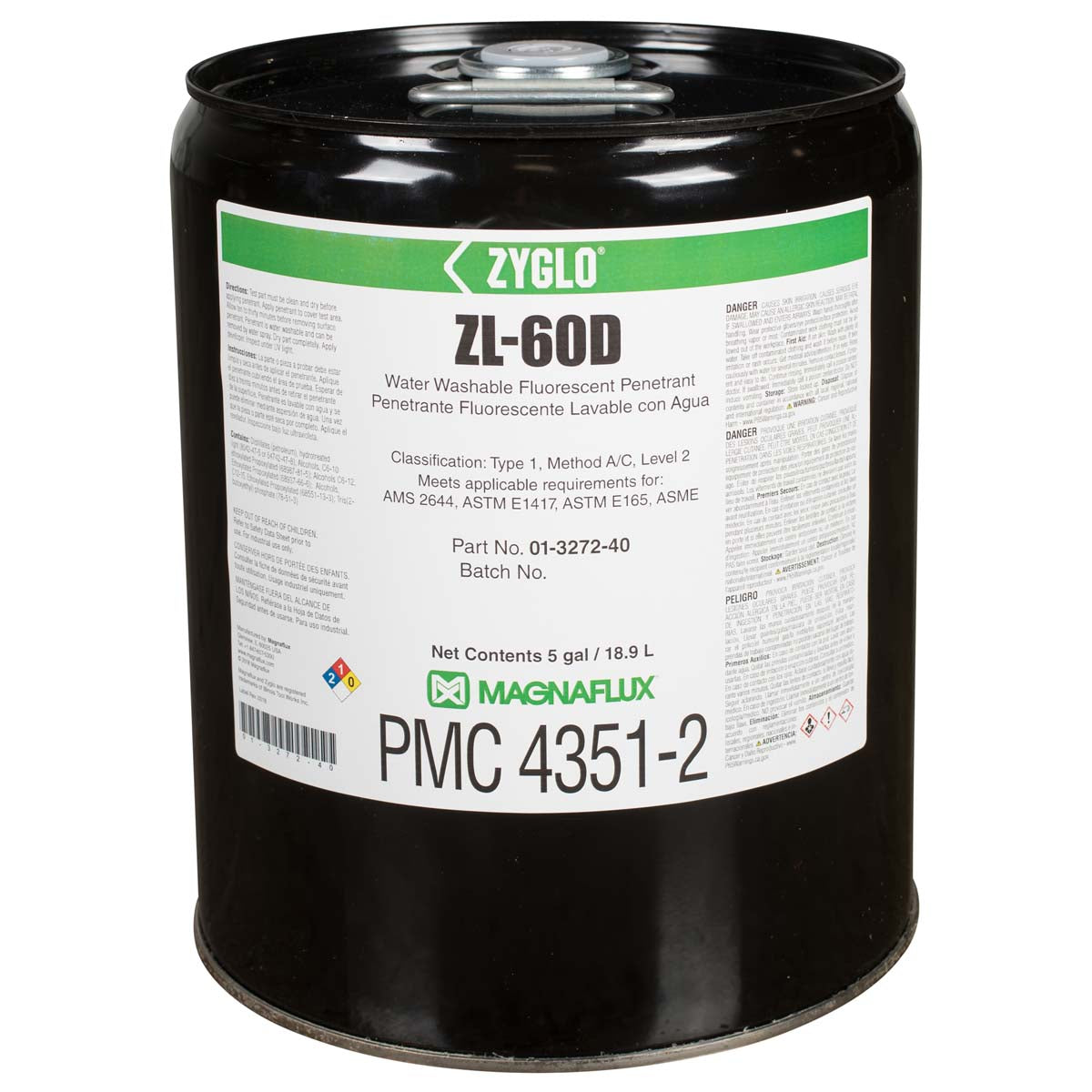
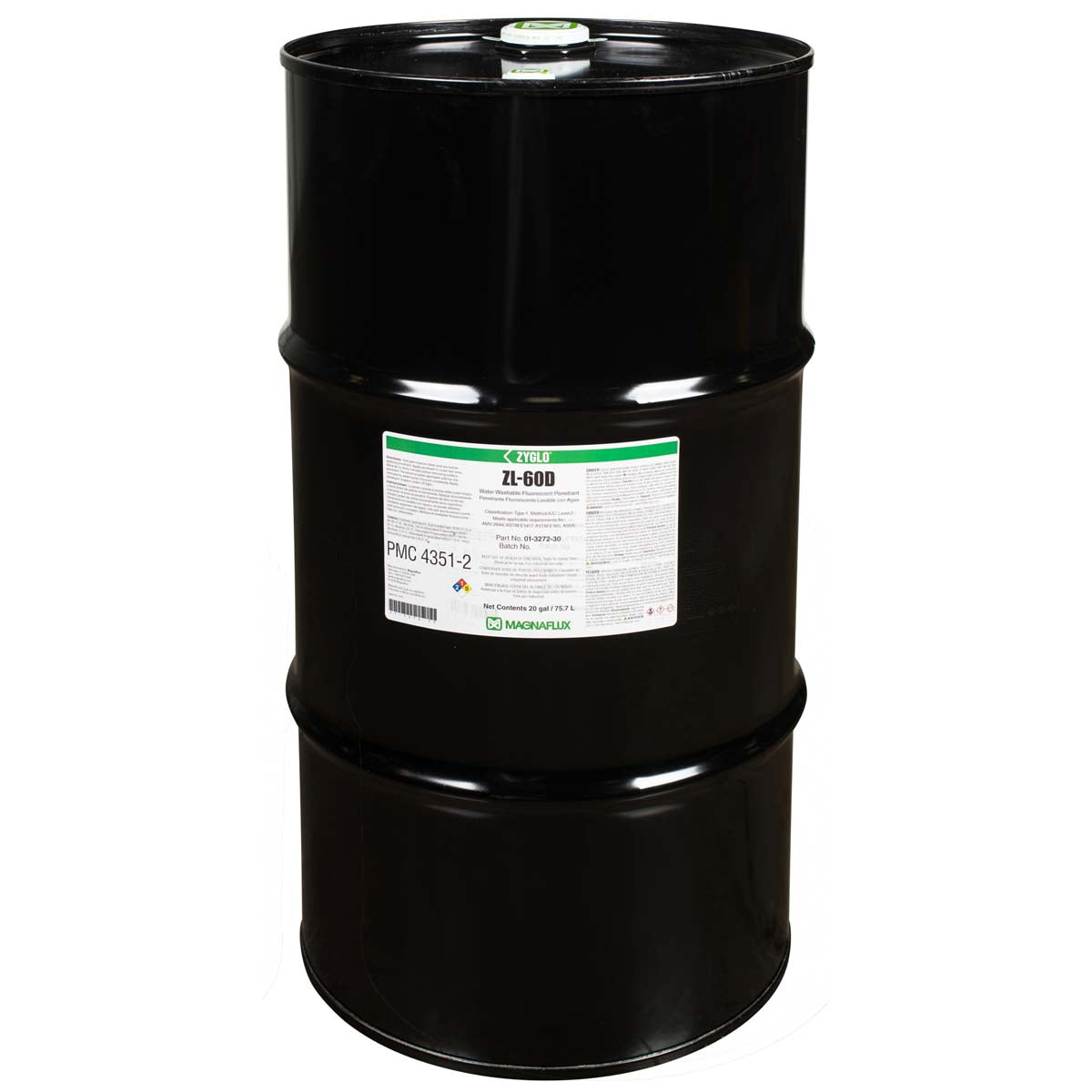
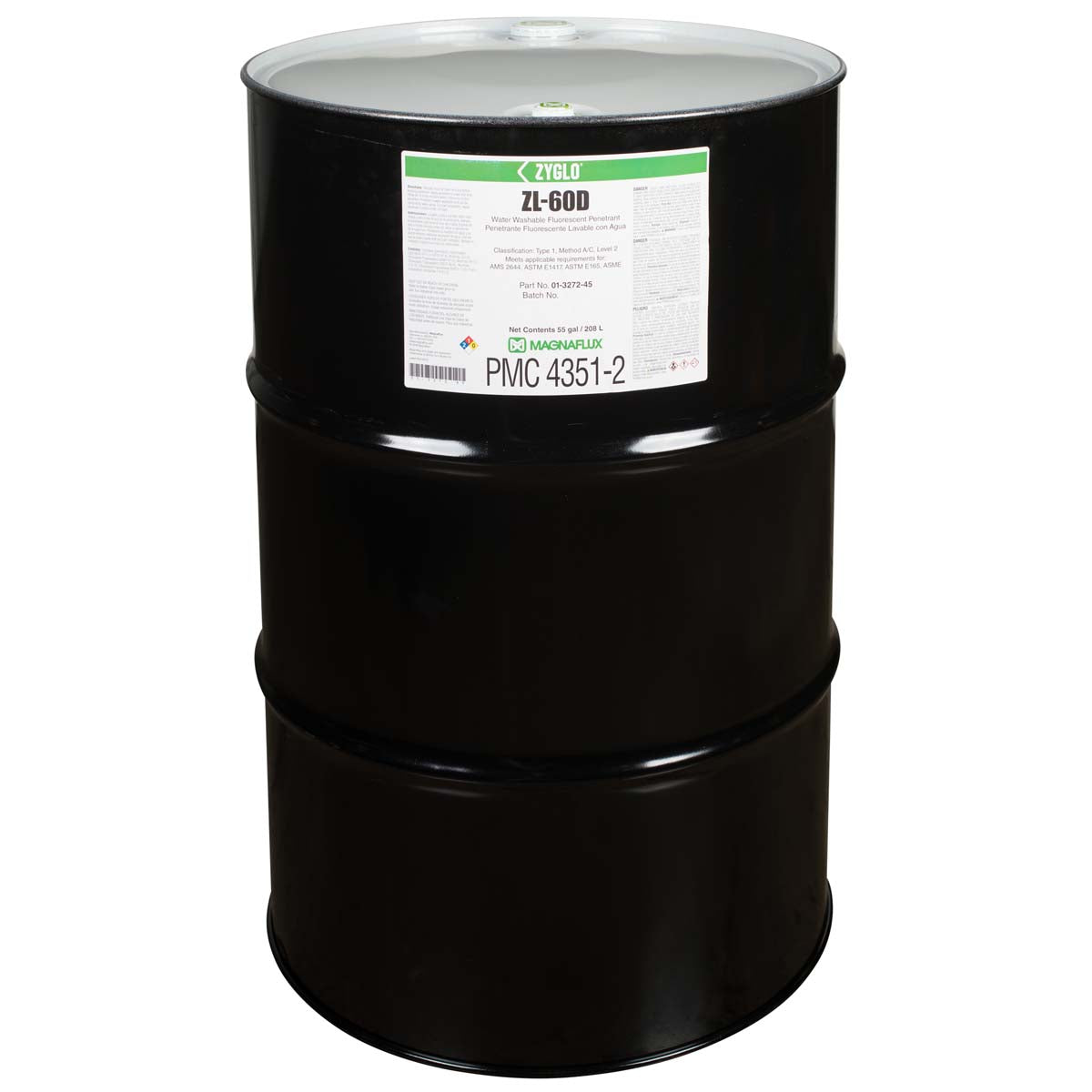
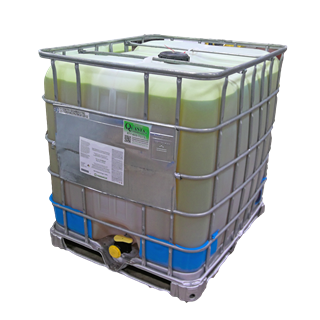
Magnaflux ZL-60D Level 2 Water Washable Fluorescent Penetrant
Designed for optimal performance on rough machined surfaces, ZL-60D is a medium-sensitivity, water-removable penetrant that excels in detecting indications in castings, forgings, extrusions, and other textured surfaces. This versatile penetrant washes off quickly and easily, minimizing fluorescent background to enhance indication clarity and improve inspection reliability.
As a true “work-horse,” ZL-60D is suitable for a broad spectrum of applications, effectively identifying various defects such as cracks, seams, laps, cold shuts, laminations, and porosity. Its high alloy compatibility makes it safe for use on most engineering and aerospace materials, including aluminum, steel, nickel, and titanium.
Recognized on the QPL SAE AMS 2644 Qualified Product List and approved for use by Pratt & Whitney, ZL-60D meets extensive specification compliance, ensuring its adaptability across multiple industries. Recommended developers include ZP-4D dry powder, SKD-S2 or ZP-9F solvent-based, and ZP-5B water-based options.
Benefits
Enhance Indication Detection
- Facilitates clearer indications by easily washing off excess penetrant with water.
- Reduces background fluorescence, even on rough surfaces.
Maximize Application Versatility
- Ideal for a wide variety of part types due to its Level 2 sensitivity.
- Offers universal specification conformance and rapid, even surface wetting.
Cost-Effective Performance
- Provides value at each step of the inspection process.
- Quick application with high surface wetting.
- Easily removable with water, resulting in less penetrant usage over time.
Operator Comfort and Safety
- Promotes a comfortable work environment, enhancing inspection quality.
- Minimizes discomfort from strong odors and exceeds all EHS requirements.
Features
- Bright, high-contrast indications.
- Good removability and excellent rough surface washability.
- Water washable with high flash point and very low odor.
- High thermal resistance and UV stability.
- Very low toxicity and optimized capillary action.
Use Recommendations
NDT Method: Fluorescent Penetrant Testing
Sensitivity Level: Level 2, medium sensitivity
Temperature Range: 40 to 125°F / 4 to 52°C
Container Sizes Available: Various sizes including aerosol, pail, and drum options.


